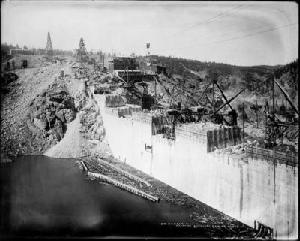
WATER & COMMUNITY
The waterworks technology and infrastructure the sustains our lives
Find out more about water in our community.
| Watershed Water & Community Personal Action Recreation History Learning Library Current Events Search |
| FAVORITE LINKS |
|
The city of Boulder's boulderutilities.net website has an array of water-related information, including the new Consumer Confidence Report (CCR). Also visit |
 Focus on Drinking Water
Focus on Drinking Water
Image map of Drinking Water Source in
City of Boulder watersheds
An in depth analysis of Boulder Reservoir Water
Quality by Jim Shelley of the City of Boulder Source Water Protection
program.
City of Boulder
Drinking Water Consumer Confidence Report provides background information on the safety and treatment of local drinking water.
Focus on Waste Water
Outside of these districts most residential structures are served by some form of Onsite Wastewater System (OWS), ranging from traditional septic systems to a variety of new technologies, all of which must comply with public health regulations. Boulder County Public Health's Division of Environmental Health has developed a web-resource for information relating to Onsite Wastewater Systems (OWS) and watershed health in Boulder County at http://www.bouldercountywater.org
History of Local Water Systems
 Professor
Al Bartlett shares his Recollections of the Origin of Boulder's
Blue Line City Charter Amendment
Professor
Al Bartlett shares his Recollections of the Origin of Boulder's
Blue Line City Charter Amendment
Historic Images of Boulder Water Supply taken in the 1920s, including former Boulder Reservoir near Red Rocks and storage dam up Boulder Canyon..
History of Boulder's Water Supply by Robin Ecklund from the Naropa Watershed Atlas.
History of irrigation in the Boulder Valley by Anne Dyni provides an historical perspective on how water has influenced-- and been influenced by-- agriculture in the Boulder area.
The Boulder Ditch Project examines 150 years of Boulder irrigation infrastucture and its lasting impacts, including historic maps, ditch history, revisiting historic photos by contemptory photographers, artistic interpretation of the lasting impacts of the irrigation infrastructure on local geography, interviews with local ditchriders, and the role of ditches in local ecosystems.
Boulder County Reservoir and Ditch Map (2000K) and Directory (PDF format).
Find out about local, state-wide and national issues relating to leaking underground storage tanks and the ways they can pollute groundwater. By Joe Ryan of the University of Colorado.
Focus on Storm Water Runoff
Environmental Center of the Rockies Demonstration Project with Dr. James Heaney
City of Boulder flood prepardness and floodplain management program
City of Boulder wetlands protection and management program
City of Boulder floodplain maps.
Keep it Clean Partnership (KICP) Consortium Website. (Intergovernmental organization for watershed stormwater management)
City of Boulder Urban Forest Report.
A Ride Through the Storm Drain Video
Focus on Hydro Power
The Boulder Creek Hydroelectric Flood Wave by
Dr. John Moody, USGS.
For many years the Public Service Company of Colorado generated
peaking power at the Boulder Canyon hydroelectric facility during
the evening hours from October to April by releasing water from
Barker Reservoir into Boulder Creek, creating an artificial flood
wave that traveled down Boulder Canyon. In 1995 & 1996 Dr. John
Moody of the USGS Boulder Lab studied this flood wave as an classic
example of flood wave propagation. In 2001 the city of Boulder purchased
both Barker Reservoir and the Boulder Canyon Hydroelectric Facility
and has discontinued regular hydroelectric releases (see Barker Reservoir management plan for more information).
Learn more about the city of Boulder's Hydroelectric plants that are built into the water supply system.
 Beginning
in 1859, inhabitants of the Boulder Creek Watershed began developing
an intricate system of waterworks-- dams, reservoirs, ditches, pipes
and treatment facilities-- to divert runoff from the watershed's
natural system and use it for purposes of mining, agriculture, industry
and municipal development. By capturing some of the peak runoff
in the spring and summer months and storing the water for later
in the year, the early water developers significantly changed the
character and dynamics of the natural system.
Beginning
in 1859, inhabitants of the Boulder Creek Watershed began developing
an intricate system of waterworks-- dams, reservoirs, ditches, pipes
and treatment facilities-- to divert runoff from the watershed's
natural system and use it for purposes of mining, agriculture, industry
and municipal development. By capturing some of the peak runoff
in the spring and summer months and storing the water for later
in the year, the early water developers significantly changed the
character and dynamics of the natural system.
One such waterwork was Barker Dam, built in 1909 (see photo above from Denver Public Library collection) by the Public Service Company of Colorado for the generation of alternating current electricity, although not at the dam itself.
For more on the hydroelectric systems in the Boulder area, see below. For historic images of the area around Barker Dam before and after the dam was built, visit the BASIN Gallery Near Nederland exhibit.
Other important waterworks include the city of Boulder's drinking and waste water systems. While originally much of Boulder's water originated in the high alpine basin near Arapahoe Glacier (now downgraded to a snowfield), today only a portion of the city's water-- around 40% on average-- comes from this protected watershed basin, which is off limits to the public.
Construction of
Barker Dam, April 26, 1910 by L.C. McClure
Photograph copyright by the Denver Public Library.
For more information visit the BASIN Gallery.
 Beyond BASIN
Beyond BASIN
Water Use